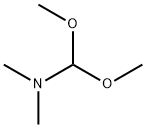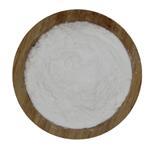Uses
Trimethylamine hydrochloride is used in the manufacture of quaternary ammonium compounds, as insect attractant. It is also used as a raw material for the synthesis of choline chloride and ion exchange resins. Additionally, It acts as a cationic starch reagent, phase transfer catalyst, oil field chemicals, warning agent for natural gas and flotation agent.
Application
Trimethylamine hydrochloride(593-81-7) is a precursor to prepare aluminium chloride- trimethylamine hydrochloride ionic liquid, which is commonly used in electrodeposition of aluminum wires. It is also used in the synthesis of trimethylamine gallane, trimethylamine-borane and azido-bridged perovskite-type metal-organic frameworks (MOFs).
Preparation
Trimethylamine hydrochloride can be synthesized through the reaction of trimethylamine (TMA) and hydrochloric acid (HCl). The synthesis reaction can be written as follows:
C3H9N+ HCl → C3H10ClN
The following steps are involved in obtaining trimethylamine hydrochloride:
Step 1: Evaporation of hydrochloric acid solution The hydrochloric acid solution is evaporated, first over a free flame, and later on a steam bath. This process results in concentration of the solution, which aids in the formation of trimethylamine hydrochloride crystals.
Step 2: Crystal formation and filtration As the solution becomes more and more concentrated, the trimethylamine hydrochloride crystals begin to form. The crystals are filtered periodically to remove them from the solution.
Step 3: Drying The filtered crystals are dried in an air bath for a few minutes, with a temperature range of 100-110°.
Step 4: Storage The air-dried crystals are then stored in a tightly closed bottle.
Step 5: Centrifugation (optional) If the trimethylamine hydrochloride crystals are centrifuged, the product is obtained pure and dry.
Overall, four runs yield an average of 710 g of pure trimethylamine hydrochloride and 82 g of slightly yellow-tinted product. This yield is equivalent to 89% of the theoretical amount based on ammonium chloride. The slight yellow coloration results from the evaporation of the last traces of solution.
DOI:
10.15227/orgsyn.001.0079
Purification Methods
The salt crystallises from CHCl3, EtOH or n-propanol, and is dried under vacuum. It also crystallises from *benzene/MeOH, MeOH/diethyl ether and is dried under vacuum over paraffin wax and H2SO4. It is kept over P2O5 as it is hygroscopic.[Beilstein 4 H 262, 4 I 419, 4 IV 138.]





